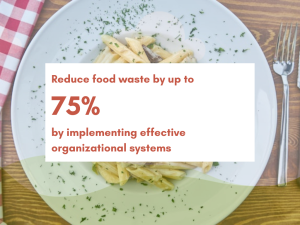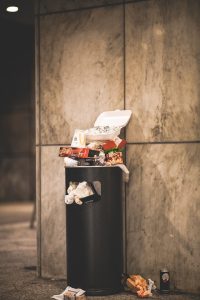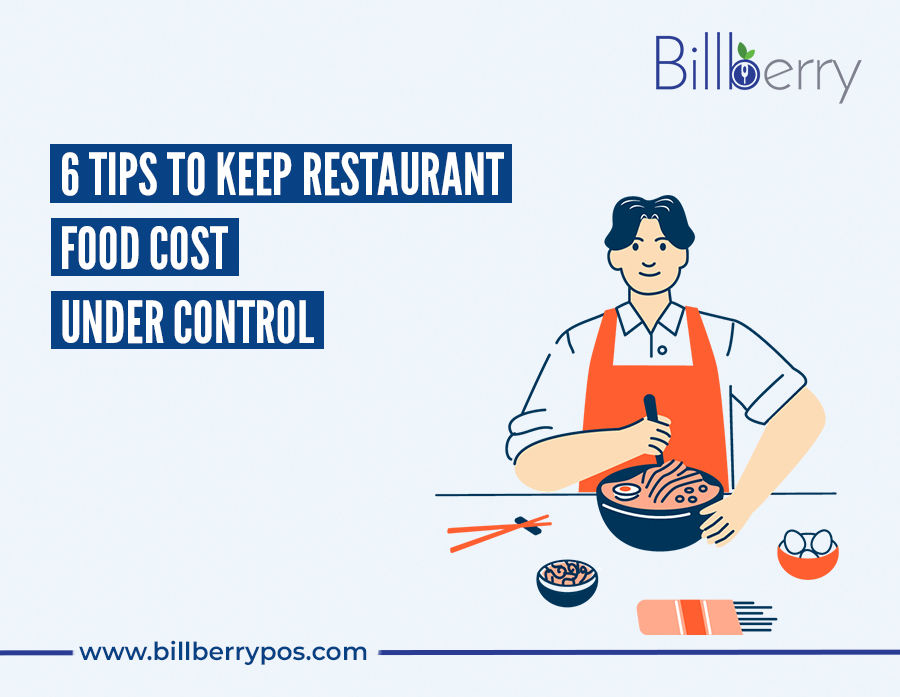Did you know that food costs typically make up around 30-35% of a restaurant’s total expenses?
That’s a significant chunk of your budget, and if not managed properly, can lead to serious financial challenges.
Our team of experts has compiled 6 practical and actionable tips to help you optimize your food costs without compromising on quality or taste.
Food costs typically make up around 30-35% of a restaurant’s total expenses.
From menu engineering and portion control to supplier negotiations and waste management, we’ve got you covered.
By implementing these strategies, you’ll not only improve your bottom line but also enhance your overall operational efficiency and customer satisfaction.
Restaurant POS Software – Free Demo
Use Menu Engineering
Menu engineering is a powerful tool that can help restaurant owners keep their food costs under control.
It involves analyzing menu items based on their popularity and profitability and making strategic adjustments to optimize revenue and reduce costs.
By using restaurant menu engineering techniques, restaurant owners can identify which menu items are the most profitable and which ones are not, and adjust their pricing and marketing strategies accordingly.

Additionally, menu engineering can help to balance the use of expensive and cheaper ingredients in different menu items, ensuring that food costs remain within budget.
12 Creative Restaurant Menu Designs To Boost Sales
In fact, according to the Cornell University School of Hotel Administration, menu engineering can increase restaurant profits by up to 15%.
Menu engineering can increase restaurant profits by up to 15%. – Cornell University
Creative restaurant menu designs are proven to be helpful to upscale restaurant revenue by a significant margin.
By incorporating these techniques into their business practices, restaurant owners can make data-driven decisions that will ultimately lead to increased profitability and success.
Restaurant Billing Software – Free Demo
Become Organized
Organizational skills are critical for restaurant owners looking to keep their food costs under control.
A disorganized kitchen or storage area can lead to wasted ingredients, over-ordering, and expired goods, all of which can contribute to rising food costs.
By implementing effective organization systems, such as keeping track of inventory, monitoring food expiration dates, and arranging ingredients by type and usage frequency, restaurant owners can reduce waste and optimize their purchasing decisions.
7 Essential Restaurant Menu Design Tips – Restaurant Menu Engineering
For example, having a clear understanding of inventory levels and usage patterns with the help of a robust restaurant POS system, restaurant owners can avoid over-ordering and ensure they only purchase what they need.
Additionally, organizing food storage areas and implementing a first-in, first-out (FIFO) system can reduce food spoilage and waste.
According to the National Restaurant Association, restaurant owners can reduce food waste by up to 75% by implementing effective organizational systems.

By taking the time to get organized at restaurant operations, restaurant owners can save money, reduce food waste, and ultimately increase their profitability.
Restaurant Management System – Free Demo
Restaurant owners can reduce food waste by up to 75% by implementing effective organizational systems. – National Restaurant Association
Control Wastage
Controlling wastage is another crucial aspect of managing restaurant food costs.
A study by the Food Waste Reduction Alliance found that restaurants generate around 22-33 billion pounds of food waste every year.
This waste not only leads to environmental concerns but also contributes significantly to rising food costs.

To reduce wastage, restaurant owners can implement several strategies, such as reducing portion sizes, reusing ingredients, and donating excess food to charities.
Additionally, tracking food waste and analyzing the causes can help restaurant owners identify areas for improvement and make data-driven decisions to reduce waste.
By implementing these strategies, restaurant owners can significantly reduce their food costs while also minimizing their environmental impact.
Moreover, customers today are increasingly conscious of the wastage produced by restaurants and prefer to support businesses that prioritize sustainable and responsible practices.
By prioritizing wastage control, restaurant owners can appeal to these customers and build a loyal customer base, ultimately increasing their profits.
Restaurant POS Software – Free Demo
Try New Suppliers With Diversified Costs
Trying new suppliers with diversified costs is a strategy that can help restaurant owners keep their food costs under control.
By working with multiple suppliers, restaurant owners can compare prices and quality to ensure they are getting the best value for their money.
Moreover, diversifying suppliers can provide access to a broader range of products and ingredients, allowing for more creative and varied menu options.
However, it’s essential to ensure that the suppliers meet food safety and quality standards and can reliably meet delivery deadlines.
What Is The Concept Of Cloud Kitchen?
Additionally, building strong relationships with suppliers can help restaurant owners negotiate better prices and payment terms.
A study by the National Restaurant Association found that almost 90% of restaurant operators say that building good supplier relationships is important to their success.
By diversifying suppliers and building strong relationships with them, restaurant owners can make more informed purchasing decisions and ultimately reduce their food costs.
Restaurant Billing Software – Free Demo
Regular Inventory Checks
Conducting inventory checks is an essential practice for restaurant owners looking to keep their food costs under control.
By regularly reviewing inventory levels, restaurant owners can identify which items are consuming the most resources and adjust their purchasing decisions accordingly.

Additionally, inventory checks can help to identify any wastage or spoilage issues and ensure that ingredients are being used efficiently.
By tracking inventory levels and usage patterns, restaurant owners can also identify which items are not selling well and may need to be removed from the menu to reduce costs.
How Restaurant Management Checklist Help Scale A Restaurant Business?
According to a study by the National Restaurant Association, around 15% of food inventory is wasted due to spoilage or over-ordering, which can significantly impact a restaurant’s profitability.
Around 15% of food inventory is wasted due to spoilage or over-ordering. – National Restaurant Association
Furthermore, inefficient purchasing and inventory management practices can lead to overstocking, expired ingredients, and ultimately, significant losses.
By conducting regular inventory checks, restaurant owners can reduce wastage, optimize purchasing decisions, and ultimately save money on their food costs.
Restaurant Management System – Free Demo
Monitor Consumption By Plate
This is a good tip for restaurant owners looking to keep their food costs under control.
By monitoring the amount of food customers are leaving on their plates, restaurant owners can adjust portion sizes accordingly and reduce food waste.
In fact, a study by the Center for Science in the Public Interest found that some restaurant meals contain up to four times the recommended daily calorie intake.
By offering smaller portions, restaurant owners can not only reduce food costs but also promote healthier eating habits among their customers.
Restaurant Scent Marketing: A Unique Way To Grow Customer-Base
Additionally, offering smaller portions can allow for more menu options and lower-priced items, which can attract budget-conscious customers.
By monitoring plate waste and adjusting portion sizes accordingly, restaurant owners can save money on their food costs and appeal to a wider range of customers.
Restaurant ERP System – Free Demo
Conclusion
In conclusion, keeping food costs under control is a crucial aspect of running a successful restaurant business.
By implementing these tips, we have discussed, restaurant owners can make data-driven decisions, reduce wastage, optimize purchasing decisions, and ultimately save money on their food costs.
From menu engineering to conducting inventory checks, there are several strategies that restaurant owners can use to keep their food costs under control.
By prioritizing cost control, restaurant owners can improve their bottom line and build a loyal customer base that appreciates sustainable and responsible practices.
In today’s competitive restaurant industry, cost control is more important than ever, and by implementing these tips, restaurant owners can set themselves up for long-term success.
Moreover, this article is curated by content experts at Billberry. Billberry is a complete Restaurant Management System and POS System that is fabricated by keeping in mind the requirements of enthusiastic restauranteurs. Book a free demo today to know how Billberry can help your restaurant business grow incessantly.






